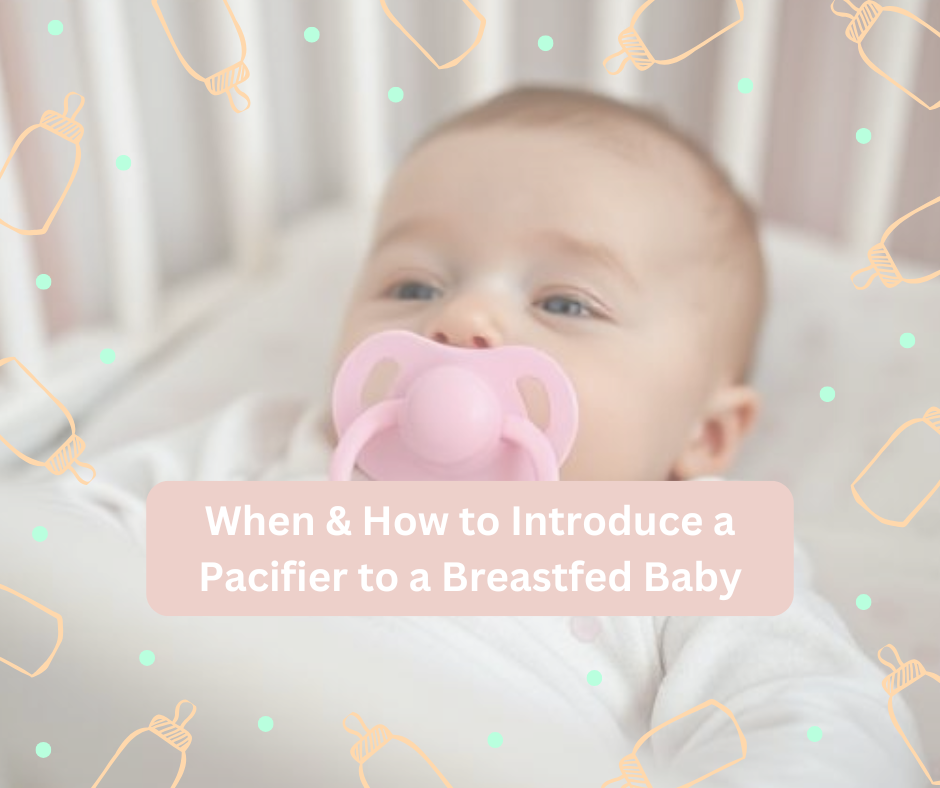
When & How to Introduce a Pacifier to a Breastfed Baby
Share
Ah, the pacifier debate. Some swear by it. Others fear it will ruin breastfeeding😬
So if you’re feeling torn, you’re not alone, mama.
Let’s break it down: when it’s actually safe to introduce a pacifier to a breastfed baby, how to do it gently, and what to watch for.
Spoiler alert: it can be a lifesaver for sleep, soothing, and sanity—if used mindfully. 🙌
When to Introduce a Pacifier
The ideal time is once breastfeeding is well established, usually around 3–4 weeks postpartum. This gives your baby time to learn a good latch, build your milk supply, and bond at the breast without confusion.
Why wait?
Introducing it too early might cause:
- Shallow latch habits
- Nipple confusion
- Skipped feeds, leading to lower milk supply
Signs Breastfeeding Is Well Established
Before introducing a pacifier, check these boxes:
- Your baby is gaining weight steadily
- You’re feeding on cue every 2–3 hours
- Nursing is comfortable (no more cracked nipples!)
- Your baby has a deep, rhythmic suck
If you’re unsure, ask a lactation consultant for a quick check-in.
How to Introduce a Pacifier Gently
1. Choose the Right Time
Offer it when your baby is:
- Full and content
- Not actively hungry
- Needing comfort (not food)
- Avoid giving it instead of a feed.
2. Pick the Right Pacifier
Look for:
- Orthodontic or breast-like shape
- One-piece design for safety
- BPA-free materials
Tip: Some moms find their baby prefers a certain texture or shape—be ready for a little trial and error!
3. Start Slowly
- Offer during naps or fussy moments
- Let your baby take it or reject it
- Don’t force it in—respect their cues
4. Keep the Focus on the Breast
Pacifiers should supplement, not replace, feeding or closeness. Breastfeeding is still the primary source of comfort and nutrition.
Why Moms Use Them
Pacifiers are tools, not parenting crutches. They can help with:
- ✈️ Soothing during travel
- 😢 Calming fussy babies
- 😴 Promoting sleep
- Reducing the risk of SIDS
Still feeling guilty? Don’t. You’re doing what’s best for your baby. Trust that.
Make Feeding Comfortable Too
Whether you’re nursing or bottle-feeding, your comfort matters.
A soft, wire-free maternity bra like ours at Bloom & Heal makes feeding sessions smoother—especially during the early weeks when you’re still adjusting. 💕
👉 Check out our maternity blog for more real, relatable support on feeding, soothing, and postpartum life.
FAQs
Q: Can pacifiers cause nipple confusion?
A: Yes, if introduced too early. Waiting until around 3–4 weeks reduces the risk significantly.
Q: Will using a pacifier hurt my milk supply?
A: Not if you're still feeding on cue and not using the pacifier to delay feedings.
Q: What if my baby refuses the pacifier?
A: Totally normal! Some babies love them, others don’t. You can try different styles or skip it altogether.
Q: Is it safe for sleep?
A: Yes—pacifiers have been shown to reduce SIDS risk. Just never attach one to a string or clip at night.

















































